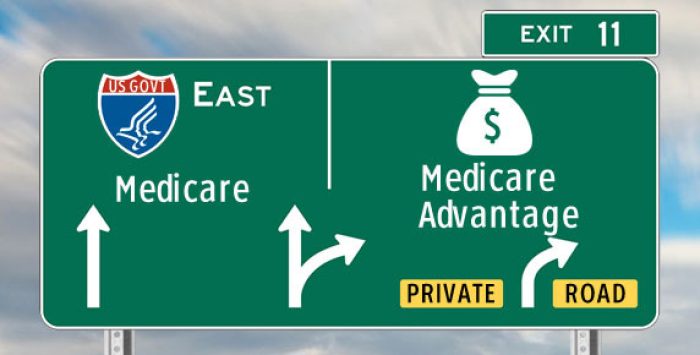When is the best time to enroll in Medicare?
Assuming you’re becoming eligible for Medicare due to age, the best time to enroll is during the open enrollment window around your 65th birthday – preferably in the three months before the month you turn 65, so that you’ll have Medicare coverage by the time you turn 65.
Your open enrollment window for Medicare Part A and Part B is seven months long. It includes the month you turn 65 as well as the three months before that month and the three months after. EXAMPLE: If your birthday is April 22, your open enrollment window runs from the beginning of January to the end of July.
If you enroll during the three-month window before the month you turn 65, your coverage will take effect on the first of the month that you turn 65. So for the example above, if you enroll during January, February, or March, Medicare coverage will be effective on April 1.
Note that if your birthday is the first of the month, your coverage takes effect the first of the month before your birthday, as long as you enrolled before that. And your seven-month enrollment window will start one month earlier. So a person with a July 1 birthday will have an enrollment window from March through September, and coverage will be effective June 1 as long as they enroll sometime in March, April, or May. But a person with a July 2 birthday will have an enrollment window from April through October, with the earliest possible effective date of July 1.
When is a person automatically enrolled in Medicare?
If you’re already receiving retirement benefits (Social Security or Railroad Retirement), you’ll automatically be enrolled in Medicare as of the month you turn 65.
If you have a long-term disability and are receiving Social Security Disability or Railroad disability annuity, you’ll automatically be enrolled in Medicare as of the 25th month of disability benefits.
In both cases, you’ll have the option to reject Medicare Part B (which has a premium), but it’s generally only wise to do that if you have coverage from a current employer (your own or your spouse’s) that has at least 20 employees. Here’s what you need to know about accepting or rejecting Medicare Part B.
If you’re going to be automatically enrolled, you’ll get information in the mail from Medicare about three months before you turn 65 or reach your 25th month of disability benefits. You can decide whether you want to go ahead with the auto-enrollment, skip enrollment, or sign up for Medicare Part C (Medicare Advantage) instead. You’ll also get information about enrolling in Medigap (supplemental insurance) and Medicare Part D (prescription drug coverage).
Reasons to not wait
If you’re not automatically enrolled in Medicare and you sign up during the first three months of your enrollment window, your coverage will take effect at the start of the month you’ll turn 65 (or at the start of the month before that, if your birthday is the first of the month).
You can wait and enroll during the month you turn 65, or during one of the three following months, and your Part B coverage will take effect the first of the month after you submit your enrollment (before 2023, it could be delayed by up to three months, but that’s no longer the case). But if you’re eligible for premium-free Medicare Part A (which most people are), your Part A coverage will be backdated by up to six months, or to the start of the month you turned 65. More details about this are explained here. So in most cases, it’s only the Part B coverage that takes effect in a month after the month you turn 65, if you’re enrolling in the latter months of your initial enrollment period.
If you skip your initial enrollment period altogether, you may have to wait until Medicare’s General Enrollment Period (January 1 through March 31 each year) to sign up, with coverage that takes effect the first of the month after you submit your enrollment (this is also a change that took effect in 2023; before that, enrollments during the General Enrollment Period resulted in a July effective date).
But even with the earlier effective date rules that took effect in 2023, this could still potentially be a long wait… if you decide in April that you want to enroll in Medicare, you’d have to wait at least 10 months for your coverage to take effect (the GEP would begin January 1, and your earliest effective date would be February 1). You may also have to pay a late enrollment penalty if you delay your enrollment.
(If you have qualifying coverage from a current employer, these provisions don’t apply, which means you wouldn’t be limited to signing up during general enrollment and you wouldn’t be subject to a late enrollment penalty. This is discussed in more detail in the next section.)
Reasons why you might wait
If you’re turning 65 but continuing to work and are covered under your employer’s plan (or your spouse is continuing to work and you’re covered under their plan), delaying enrollment in Medicare Part B (and possibly Part A) might be the best option. Here’s a more detailed overview of everything you need to know about delaying your Medicare Part B enrollment.
If your employer (or your spouse’s employer) has at least 20 employees and covers you under a group health plan, you can delay your enrollment in Medicare Part B while you continue to be covered under the group plan. You’ll want to check with your HR department to make sure that your plan is considered a group health plan under IRS rules. Assuming it is, you can wait to enroll in Medicare Part B — which means you get to avoid the Part B premiums — until you stop working or your employer stops offering the coverage (or, if the coverage is through your spouse, until your spouse stops working or their employer stops offering the coverage).
At that point, you’ll get an eight-month window to sign up for Part B without a late enrollment penalty. You’ll also be able to access your one-time guaranteed-issue window for enrolling in a Medigap plan at that point (it begins when you’re at least 65 and also enrolled in Part B). Keep in mind that the employer-sponsored coverage must be from a current employer — COBRA or retiree benefits won’t count. And if you’re covered under a small-group plan from an employer with fewer than 20 employees, you need to enroll in Medicare when you’re first eligible, as Medicare will be your primary coverage in that case.
(To clarify, the eight-month special enrollment period is available even if you delayed Part B because you had active employee coverage from an employer with fewer than 20 employees. But if you delay Medicare Part B while covered by a small employer’s plan, you might find that your outpatient care isn’t covered, since the small employer’s plan is secondary to Medicare in that case and will not pick up the share that Medicare would have paid. So it’s generally not a good idea to delay Part B if your employer-sponsored coverage is provided by an employer that has fewer than 20 employees.)
Most people who continue to work after age 65 (assuming the employer has 20+ employees) will enroll in Medicare Part A, as it has no premiums for people with 10+ years of work history. But if you’re enrolled in a high-deductible health plan (HDHP) through your employer and making contributions to your health savings account, you might want to consider delaying both Part A and Part B. That will allow you to continue to make pre-tax contributions to your HSA. If you enroll in Medicare (including Part A on its own), you cannot continue to contribute to your HSA, even if you continue to have coverage under an HDHP from your employer.
Delaying Medicare entirely (including Part A) will mean that you also need to delay your Social Security benefits, as you cannot be receiving Social Security benefits after age 65 without also being enrolled in at least Medicare Part A. And it’s important to understand that once you do eventually stop working and enroll in Medicare, your Part A coverage (assuming you don’t have to pay premiums) will be backdated to six months before you applied for coverage (but no earlier than when you turned 65). HSA contributions cannot be made for any month that you have coverage under any part of Medicare, so you’ll need to stop making HSA contributions at least six months before you enroll in Medicare.
CMS has a helpful fact sheet that you can use to pinpoint your situation and decide whether it makes sense to delay your enrollment in Medicare.
If you miss your window
If you don’t enroll in Medicare A (assuming you have to pay premiums for it) and/or B during your seven-month open enrollment window, you’ll have a chance to enroll during the General Open Enrollment period, which runs from January 1 to March 31 each year. If you enroll during that window, your coverage will take effect the month following enrollment, so if you sign up in February, you’ll have coverage as of March.
But there’s a penalty for late enrollment in Medicare Part B, amounting to a 10% premium increase for each full 12-month period that you could have been enrolled in Medicare B but weren’t – this penalty continues for as long as you’re enrolled in Medicare, so it’s best to enroll when you’re first eligible.
The penalty for late enrollment in Part B does not apply if you had creditable coverage from an employer-sponsored plan (from your own current employer or your spouse’s current employer) during the time that you delayed enrollment in Part B. When that employer-sponsored coverage ends, you’ll have an eight-month window during which you can enroll in Part B, without a penalty.
But if you delay Part B enrollment to save money on premiums, without having coverage from a current employer in place, you’ll likely be subject to the late enrollment penalty when you do enroll during the general enrollment period in a future year.
(There’s a penalty for late enrollment in Medicare A too, but it only applies to people who have to pay a premium for Medicare A, and most seniors receive Medicare A with no premium.)
Louise Norris is an individual health insurance broker who has been writing about health insurance and health reform since 2006. She has written dozens of opinions and educational pieces about the Affordable Care Act for healthinsurance.org. Her state health exchange updates are regularly cited by media who cover health reform and by other health insurance experts.
Tags: enrollment, Medicare Advantage, Medicare Part A, Medicare Part B, Medicare Part C, Medicare Part D, Medigap









